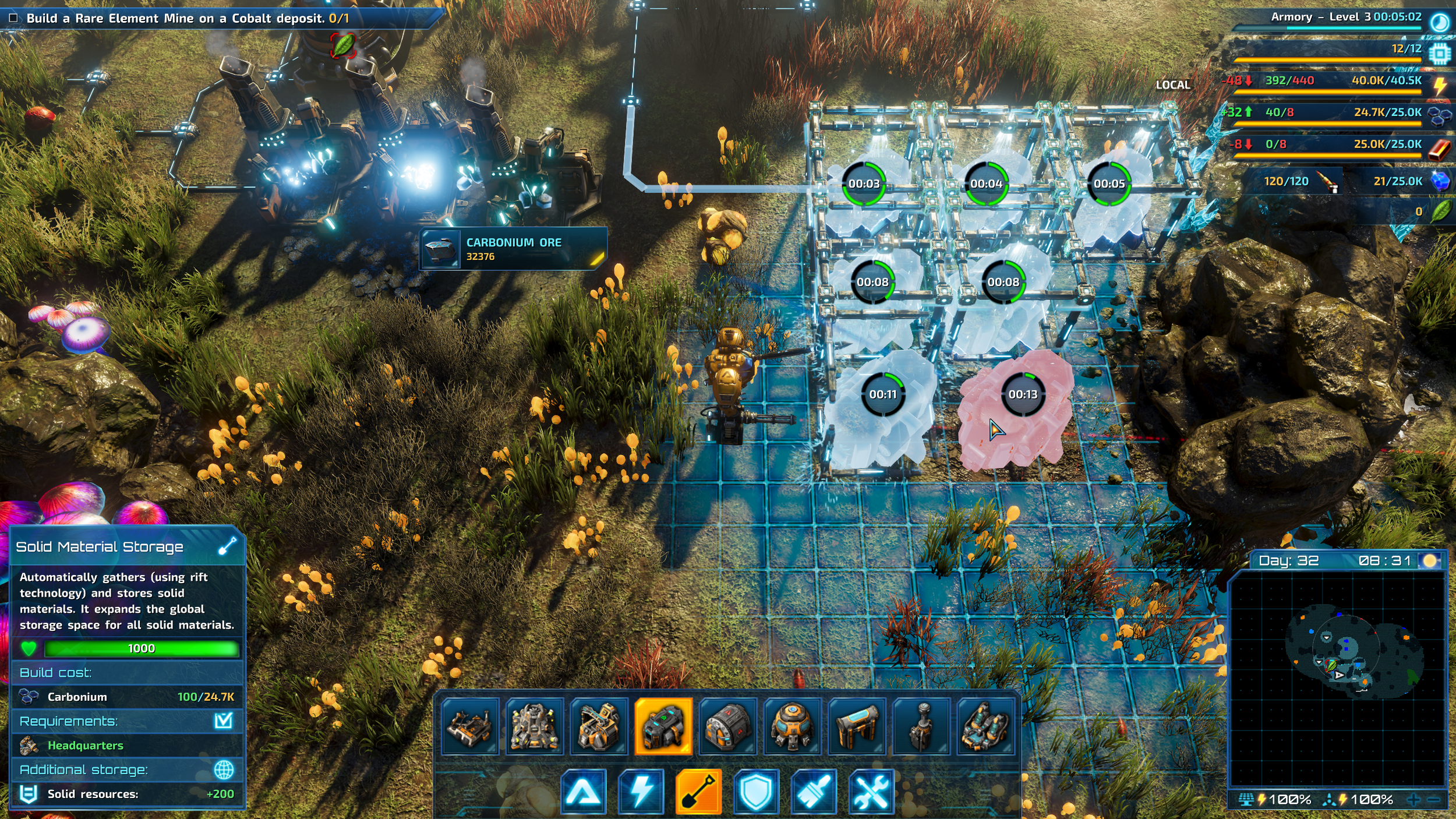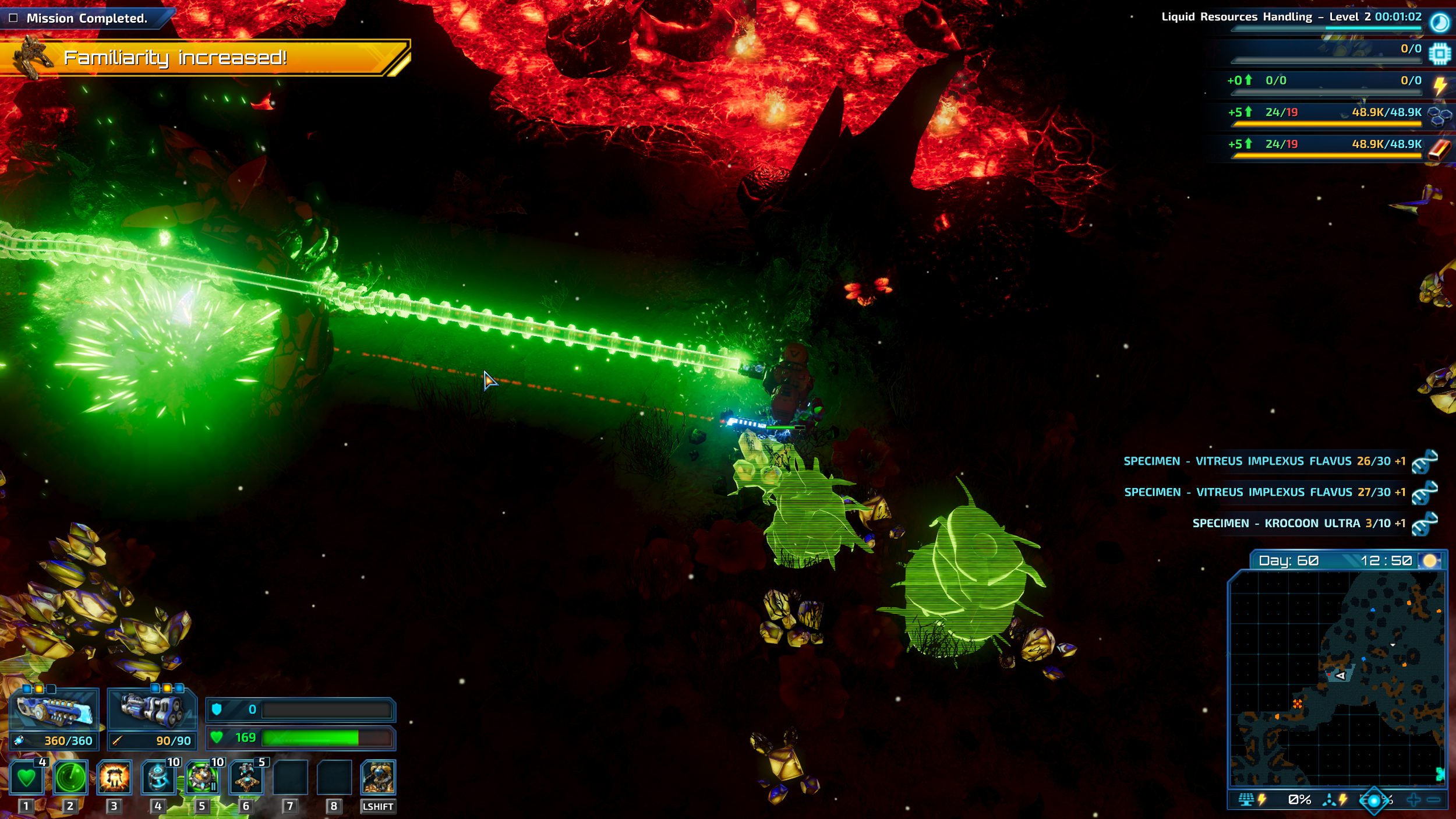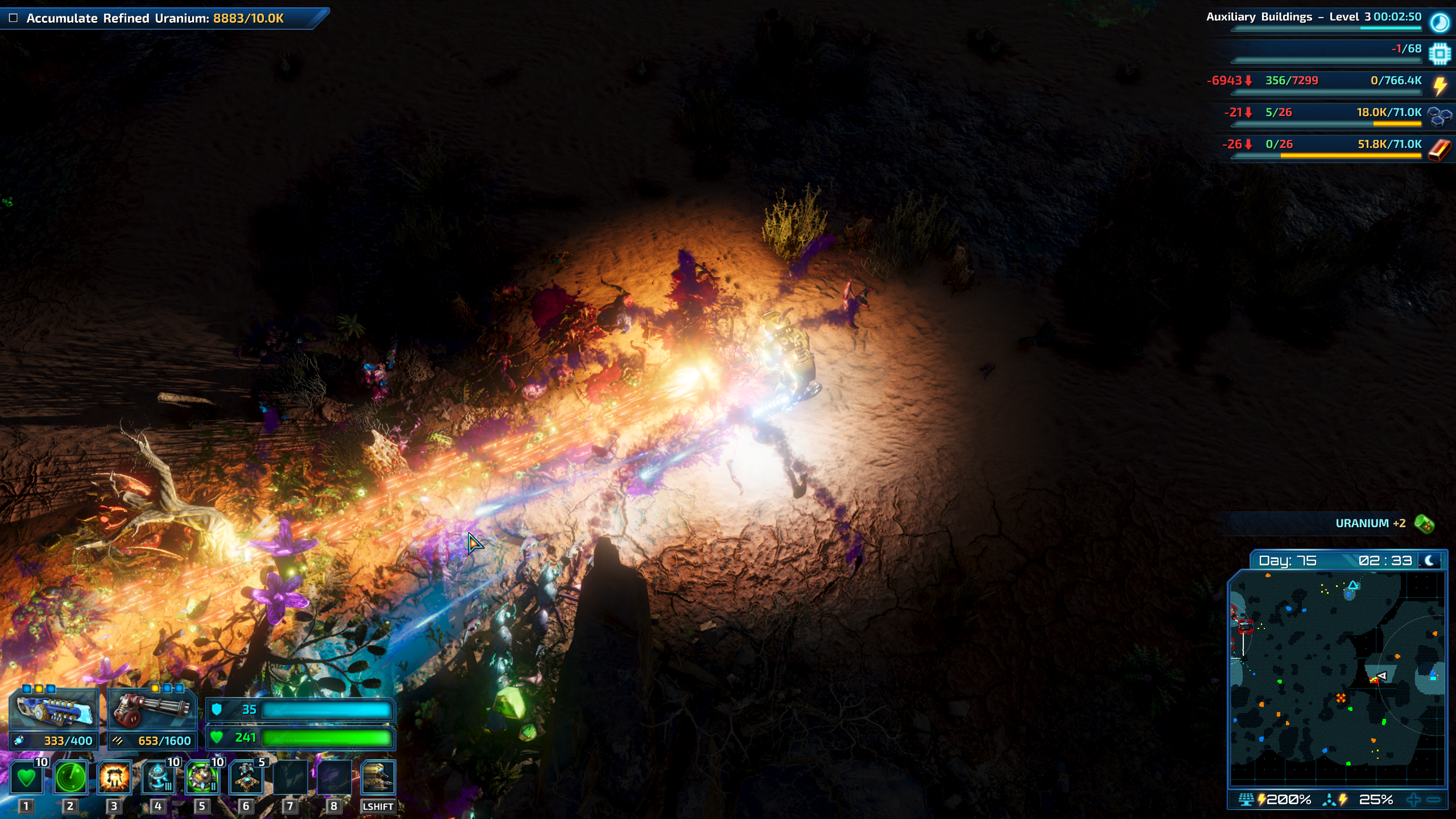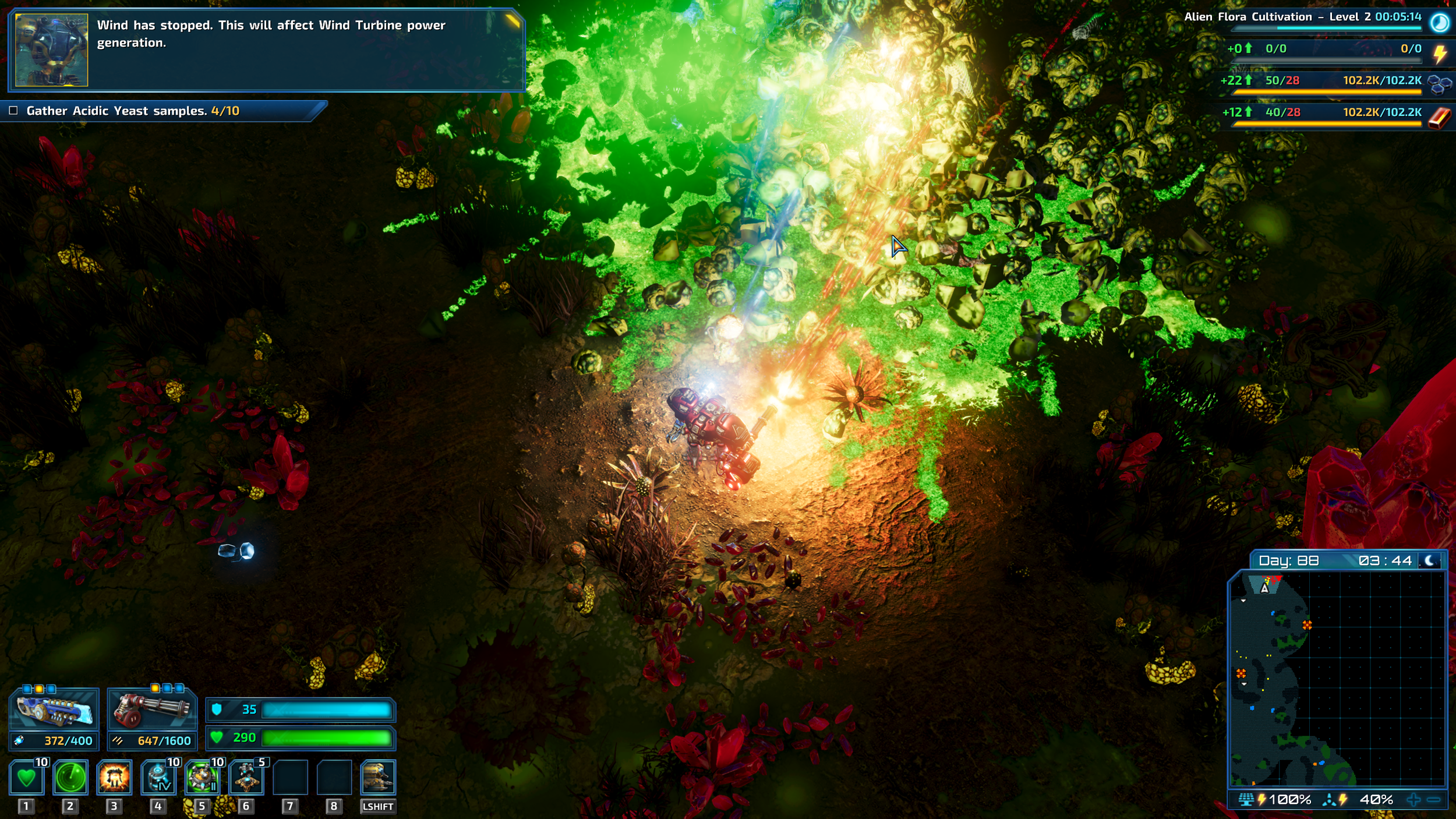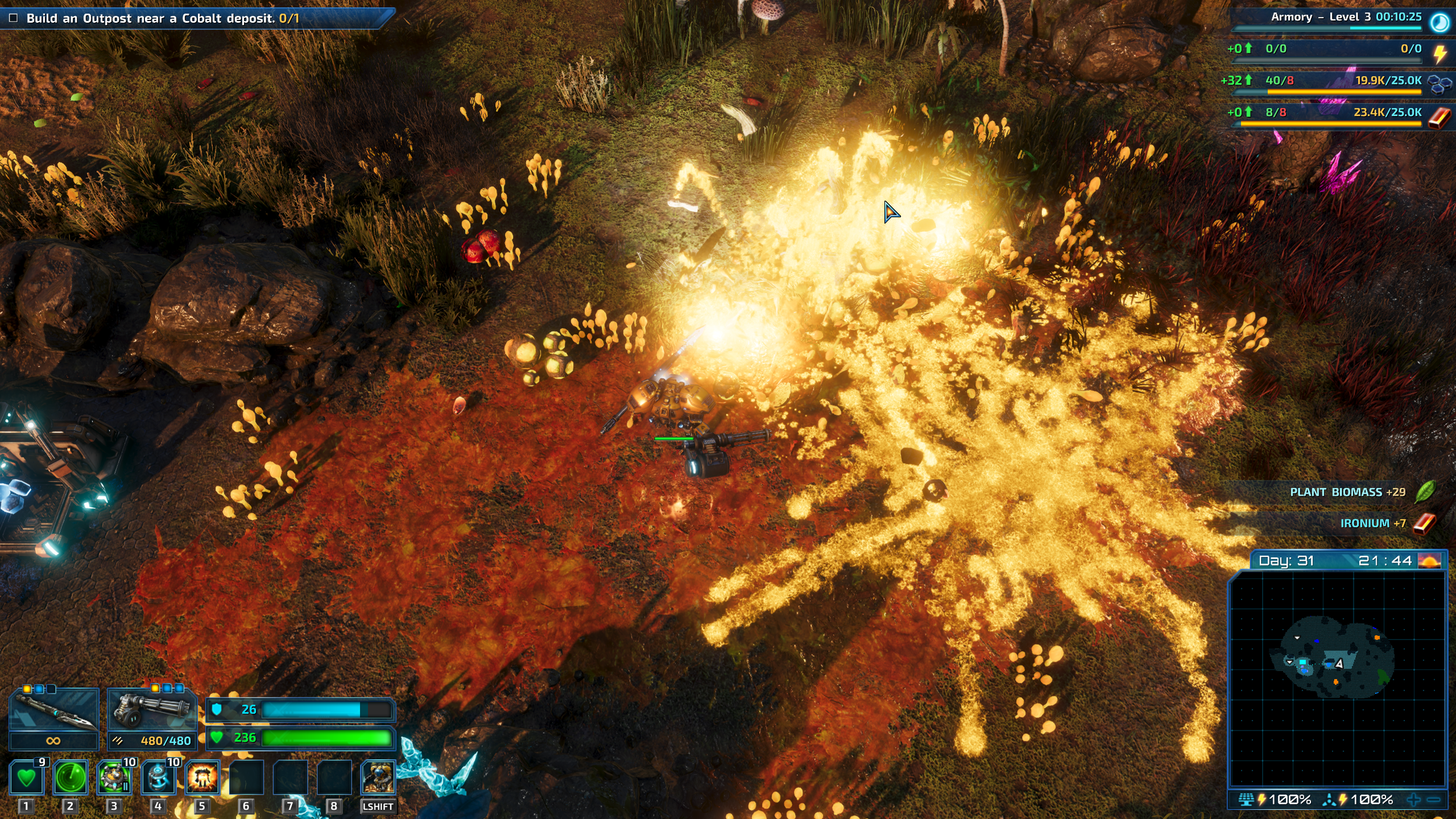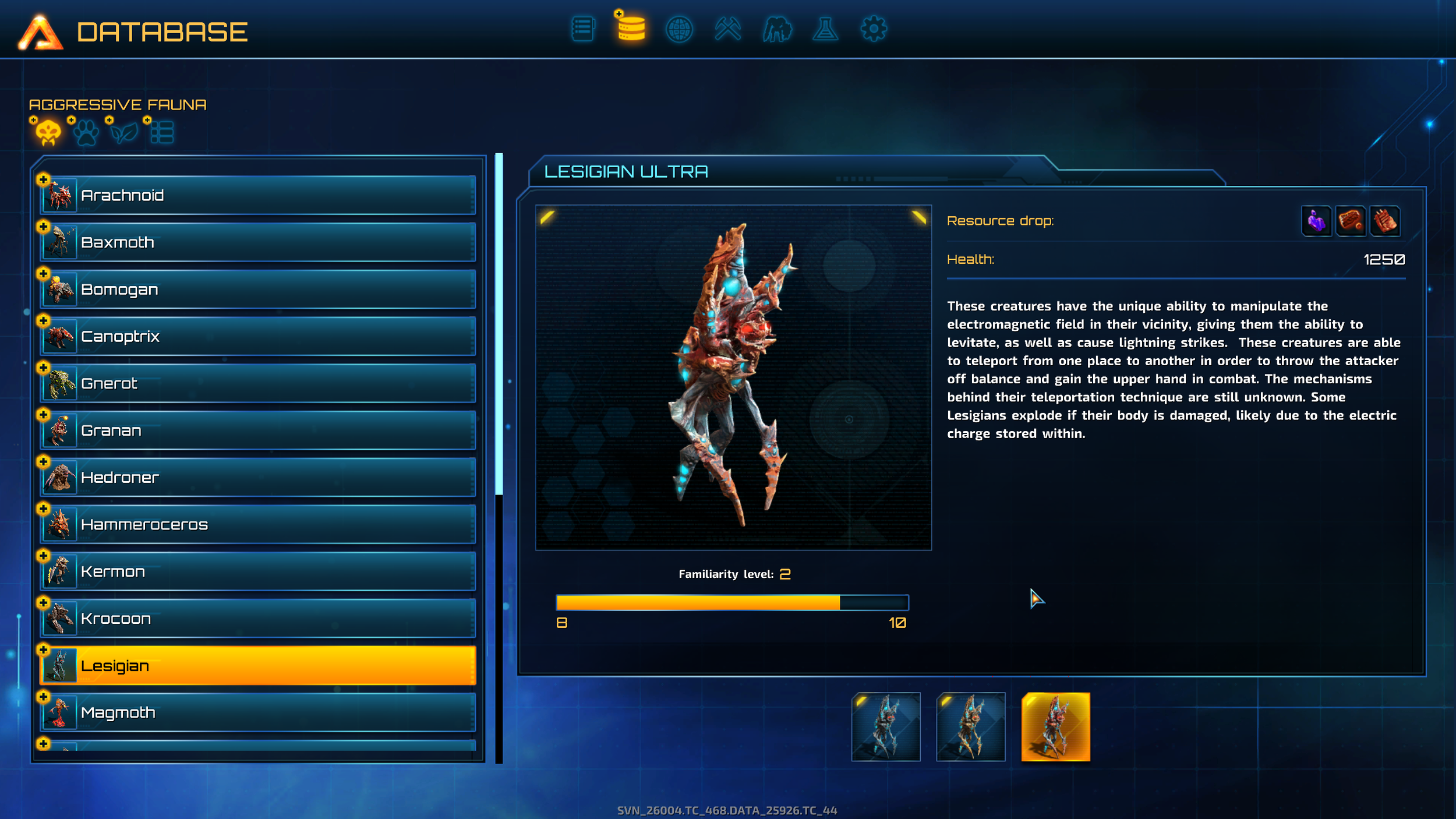Real time strategy games have been around since the dark ages of gaming, back when a few well-placed pixels were considered the height of graphical wizardry. This was absolutely fine of course as the magic of RTS games is how they play: as Dune 2 so effectively illustrated. Over the years we have seen many variations of this genre, from the Command and Conquer series, Age of Empires and Starcraft to name a few.
The basic premise has always been the same; gather resources from the environment while establishing some sort of base or settlement. Then defend your new digs against enemy attacks and eventually decimate your opposition with a larger or superior force. In 1997 Total Annihilation was released and it gained a huge following due to the wonderful unit design and flashy explosions; proving that visuals could enhance an already well-trodden formula. It also had a huge mech that acted as a mobile HQ and this same idea carried on in Supreme Commander. The latter title also showed how a clever UI could make commanding hundreds of units a breeze. It seems to me that the team at Exor Studios have been paying attention to these lessons when designing their own offering.
Almost Annihilation
So what kind of game is The Riftbreaker? While getting to grips with this deliciously well-presented game and discussing it with friends; a few have stated they don’t think it is a Real Time Strategy game (RTS). This position was mostly born from the fact that in (The) Riftbreaker you only control one massive Mech. Ashley is the human element to this base building duo and she sits safely inside dishing out advice at prudent moments.
The term ‘real-time strategy’ was actually coined by Brett Sperry in the promotion of Dune 2 way back in the early 1990s. The creation of units that the player can then command is seen by many as a fundamental part of any RTS and indeed it is in the conventional sense. However, in this game the only unit you take direct control over is Mr Rigs and therefore some veteran strategy fans might be getting a little worried at this point; but let me set you at ease.
First Base
This game works so well due to a number of clever design decisions by the team at Exor Studios. As you rift into a new zone you will send foliage, fauna to the afterlife in the most spectacular fashion: think the Terminator time jump but a little more messy. Like any good RTS, your first job is to acquire resources and then start turning these into structures that will eventually form your first base. The Headquarters is the first building you create and must be protected at all costs. After this, you will go on to fashion the usual set of structures such as walls, wind turbines and defence turrets.
Power is a vital element to the running of your base and without it, everything just grinds to a halt: including your defences. This is where your first strategic decisions come into play because you cannot rely on one form of power. Sure solar panels are very efficient but only work in the daytime and will also be scuppered by fog, volcanic ash or the setting sun. Wind turbines are more reliable but if the wind stops blowing just as you get attacked what then? You could actually burn Carbonium as a power source, but this is also a vital building material. As the game progresses the research options open to you become greater, from thermal geysers, bio-electric plants to nuclear power stations (and plenty more). I’ve seen many games where the research trees are massive but in the end, it doesn’t amount to much more than an elaborate set of stat boosts. In Riftbreaker each point on that research tree is a tangible and exciting option that will give you something new to try, it’s almost overwhelming. I also like the way that some of these paths are closed off until you have arrived at that part of the campaign. In this way, the game does have a subtle element of guidance which is appreciated considering the sheer number of structures and equipment you need to consider.
A Rift Between Us
Once you have the necessary buildings up and running you will have the ability to rift jump to other biomes on the planet in the search for new materials. As you might imagine these will be integral to building better technology as well as constructing the rift gate required to get back to Earth. There are often a few smaller missions to take on before settling into a bigger version of the new biome, such as scouting for samples in order to track down bigger resource nodes. These missions don’t add a huge amount of variation and I think this could be one aspect ripe for improvement in any sequel.
Power for any electric grid will be handled locally in each biome, so when setting up new camps power will always need to be considered. However, resources are handled collectively between all the bases across all biomes. This can be hard to get your head around at first but given the way the game lets you rift between them all it works pretty well. As mentioned, you are the only controllable unit so the developers have wisely given you the ability to place rift portals on the maps. In this way, you can easily fight off one horde and then zip to somewhere else to lend a hand.
Liquid Metal
The many elements of base management are presented to the player in such an easy to process way, it frees you up to enjoy making strategic decisions. The basic minerals and power levels are shown on the top right including your current output and stores. You can also see at a glance how effective the sun and wind are at any given time. As there is a full day and night cycle you should also keep tabs on the time of day, especially if you rely on solar power.
One of my favourite parts of playing this game is the speed at which you can get structures up and running. Within a minute (providing you have the resources) you can have a small outpost in place including defence towers, radar stations and repair towers. As you build things like solar panels or walls you can literally just drag and drop them by holding left-click. Indeed, placing down floor tiles feel almost like painting the landscape with a massive metallic brush. I also love how running on floor tiles is faster, therefore giving you the incentive to place them down properly.
Animal, Vegetable, Mineral.
Something you won’t usually hear reviewers talk about in RTS games is how full of life the environments are. For the most part, developers will add enough environmental assets to give the feeling you’re in the forest or swamp; but these are usually kept out of the way so as to not impede the movement of units etc. In this game, the maps are positively bursting with lush vegetation and a whole manner of creatures to research (or explode). There are actually quite a lot of elements to the maps, such as scanning for hidden resources, special boss creatures or probing the wildlife for more rewards when killed.
It’s not just that this all looks good, it also has a great sense of physicality as you brush past foliage it sways in your wake. If you walk into smaller trees they will be toppled under your weight and that’s before the firing starts. As soon as grenades start flying and the bullets ripe through your foes the environments will show the destruction in glorious detail. You can see explosives destroy what they land on but then the shockwave will also wash over the surrounding plants giving you a wonderful visual treat. It often reminds me of the scene in Predator when Mack does a bit of weeding with the minigun.
The games physics also enhance and change combat in various ways, such as firing grenades in low gravity locations is far more difficult. Ordinance will also use real trajectory pathing and if a grenade catches a tree or rock it will react accordingly. Also seeing a massive horde sent skyward in chunks after a massive explosion is so satisfying.
We got Hostiles!
So at every step along the path to the perfect interstellar base, you will have the locals knocking at the door. There is a wide range of enemy types to deal with from the numerous cannon fodder to giant rock beasts the size of a jumbo jet. Each comes with its own attack method which keeps things interesting but most will still throw themselves at your defences like there is no tomorrow. I cannot really convey in words or pictures how awesome it is to see these tsunamis of claws and teeth smash into your outpost walls. As you venture out from your base you will find pockets of enemies ready to pounce but these will eventually run out. You will also have hives around the edges of the map which will send regular visiting parties to your location and even bigger hordes will come at you from off the map edges.
Each of the biomes also has its own set of creatures which is an exuberant feature that shows how much effort the developers have put into the presentation of this game. After you have minced animals into roadkill you will even see smaller scavengers feeding off the scraps. They will even scatter as you get too close and it’s this attention to detail that I love. Part of me would love to have seen a few more variations in horde AI but then again, it’s hard enough to repel them when you know which direction they are coming from.
Winning with Science!
Sometimes you will come across some truly jaw-dropping research trees in gaming, the problem is most of them turn out to be elaborate numeric improvements: this is not the case in Riftbreaker. The tree is split between three sections; building, weapons and alien research. Some of these sections will progress as part of the main campaign, like learning how to handle new materials or developing shielding for certain hostile environments. You don’t need any resources for research either and so it is just a case of selecting your list and waiting for the time to elapse.
Once you have upgraded a structure to the next level you can upgrade existing buildings in the field which saves having to replace everything. You can also hold Alt and build the highest level building you currently own, which is a handy feature. One option I would like added is to select a large area and upgrade all buildings at once because upgrading walls can be very time-consuming.
As you push weapons research forward you can also start upgrading the weapons and equipment you have on your trusty mech. This part of the game is also surprisingly well fleshed out and lets you kit out Mr Rigs exactly to your preference. Weapons range from an assortment of melee options such as spears and swords to ranged efforts like pulse guns and rail cannons. My favourite combination is a high powered minigun with the devastating hammer, but each arm can hold up to three weapons so you're never caught short. All the weapons in Riftbreaker look, feel and sound utterly fantastic to use. This is helped by the devastating effect they have on the creatures and environments you point them at.
Is it PC?
So I have heard that the console versions of The Riftbreaker have had a few performance issues, but we ain’t playing on console here so I’ll leave that parked. In my experience and given the sheer number of enemies this game can throw at you; it runs remarkably well. In the later levels, the game can start to throw some insane hordes at you and in these situations, you can see a noticeable dip in performance. However, the game does seem to handle this by slowing down time slightly as opposed to frames dropping completely and this works really well. In fact, it also helps give you a few seconds to process where you are needed the most when being attacked on numerous fronts.
I did come across one level where you must fight back an ever-growing sea of acidic yeast-based plants. I can also see this level getting the better of some older systems so just be aware of that. I will also say, I now hate yeast (you will find out why!). The final confrontation will also be a CPU killer for some because the game throws so much at you while still keeping the details on units at crazy levels. Apart from one hard crash the only other slight technical niggle I had was that the game freezes for a few seconds when auto-saving (which it does often) and this can jar your flow when in the middle of a fight or mass building project.
I think I have covered the controls in relation to mouse and keyboard, it all works perfectly and is enhanced by good UI design. I was very surprised to see how well using a controller works, even for the more complicated actions like laying down walls and power grids. So if you fancy playing this on the Steam Link and sitting back on the sofa that is totally an option.
The sounds design in Riftbreaker ranges from good to excellent, with my highest praise going on the UI sounds as they let you know exactly what is happening around you. Weapons all sound meaty and powerful, my favourite being the minigun cleaning up faster than the Shake and Vac lady. I have seen a few negative comments out the voice acting but I think this is a little harsh as it’s not a story-based game. However, I do like that the conversations between Ashley and Mr Rigs are informative and let you know what to do next.
Conclusion
In theory, a game review should be produced completely independent of all other influences, but I’m only human. The fact we’ve had so many turkeys this last year makes it so damn good to have a game come out finished and ready to rock. The Riftbreaker knows exactly what it is and doesn’t get in its own way. The base building is both slick, satisfying and makes the whole process actually fun. Many RTS developers often fall over when trying to make the combat and base building mesh together but on this front; Exor Studios have absolutely nailed it.
I think the best part about Riftbreaker is that it has so well made elements I can happily recommend it to anyone. The game is also very reasonably priced and has plenty of replay value built-in, especially as we now know a co-op mode is going to be added at some point. There is a demo on Steam for those who are still not sure and it is also part of the GamePass package offered by Microsoft. Obviously, if you like any kind of base building or action/strategy games this is also an easy choice. I will say that at the time of writing The Riftbreaker is easily my game of the year.


